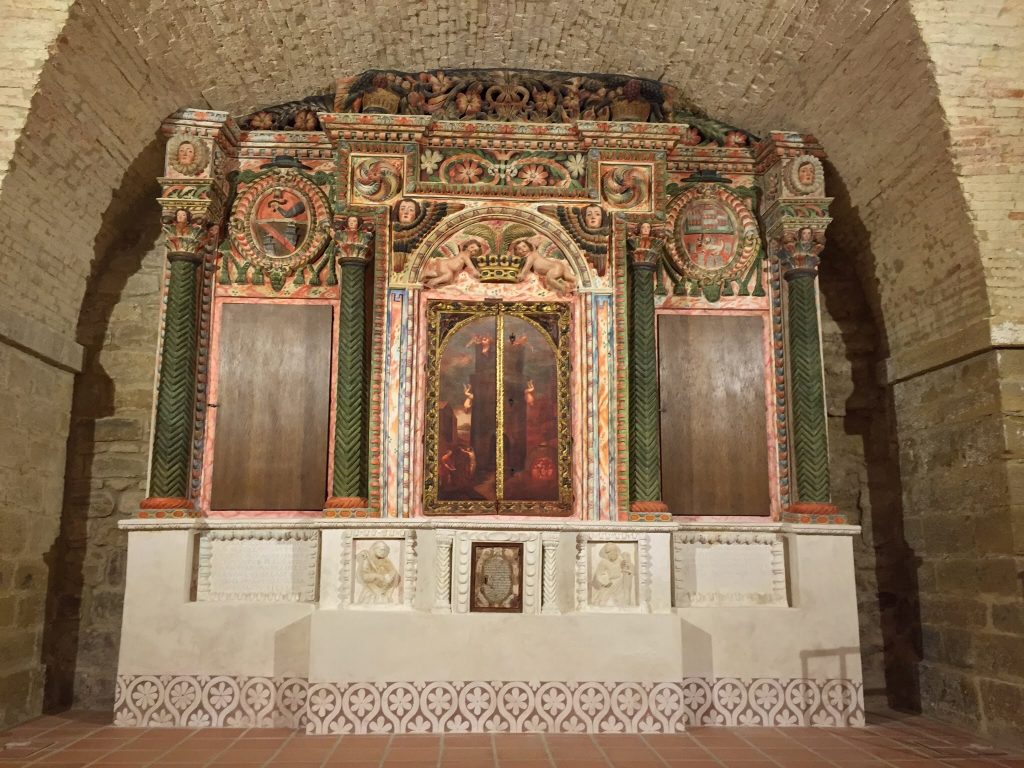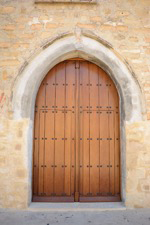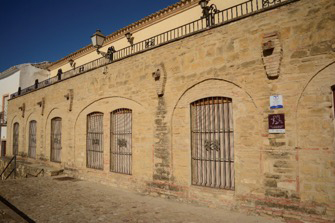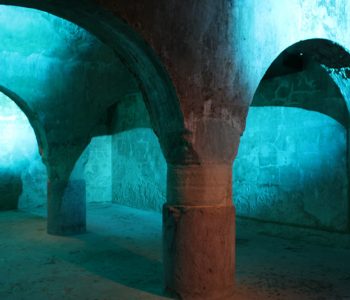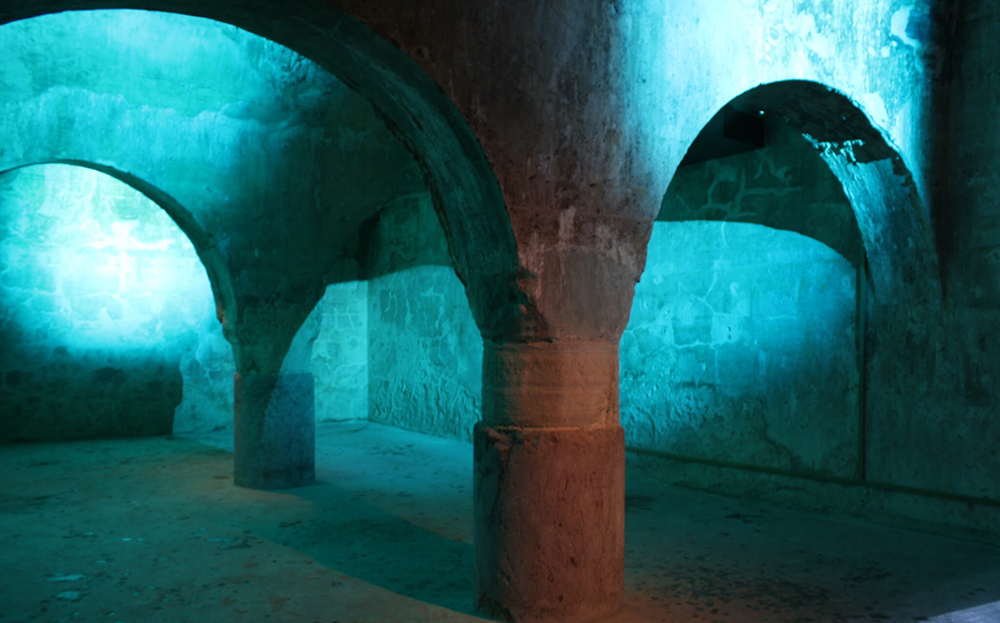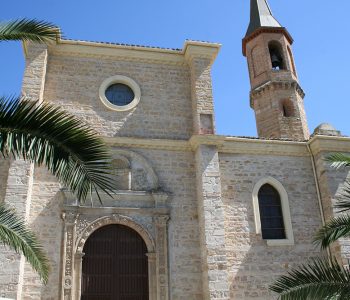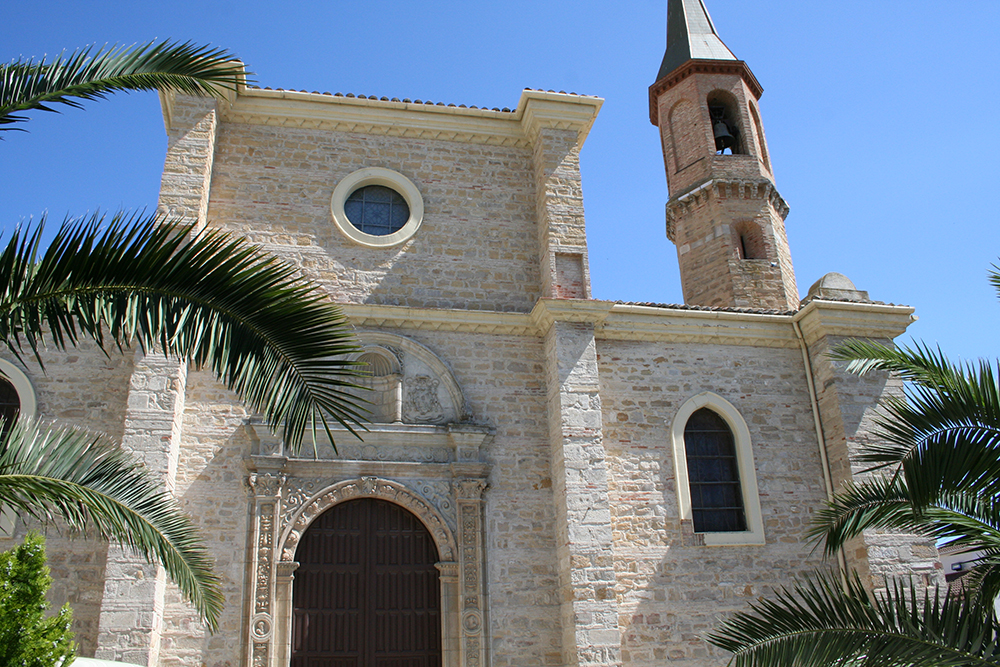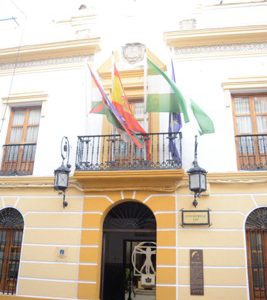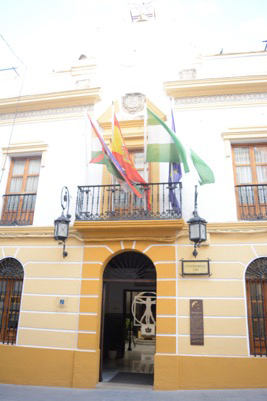 No category
No category
Santa María square

The Plaza de Santa María corresponds to part of the space occupied by the old Alcázar de Aryuna, of which barely the antemural remains, an imposing canvas of a sloping wall based on large masonry of pre-Roman origin, heir to a vast defensive system that would have its maximum splendor in Islamic times (S. IX). The square acts as an excellent viewpoint of the fertile and extensive countryside of Jaén and its spaciousness makes it an ideal space to start the literary route. A square, which the author himself describes in this way in The Templars and the Table of Solomon:
“(…) When I arrived I telephoned Pepe Alcántara, Councilor for Culture, Juan’s friend, and met him in the highest part of town, Plaza de Santa María, an esplanade from which you can see a long and beautiful landscape of the olive-growing countryside, with Sierra Morena to the north and Peña de Martos and the Jabalcuz mountains to the south. (…) “
The Templars and the Table of Solomon. Chapter 1.
In The Templar’s Tombstone, Plaza de Santa María is used to contextualize the location of the Sanctuary of the Sacred Relics (Sanctuary of the Saints or Sanctuary of the Alcazar in the work), as well as the Iberian origin of Arjona.
“(…) “Holy moly!” Iñiguez exclaimed. “We are on an Iberian citadel. These sloping walls and these stones are an Iberian wall, quite similar to that of Puente de Tablas”. (…) “
To make the most of our stay in the square, it is convenient to approach to observe an element that has a lot to do with Juan Eslava Galán: the “Stone of Desires” or “The Chances”. It is a ritual or ceremonial stone, since they were considered to be divinities associated with the fertility of the earth or of women and it is archaeologically named Betilo. From a geological point of view, the “Stone of Desires” is a sandstone / limestone sphere that is very eroded, with small concavities that dot its surface, which confer it a lunar appearance. Currently there is a ritual in the town that consists of placing the 5 fingers of a hand in holes of similar size and making a wish. The “Stone of Desires” comes from an excavation that was carried out on a site near the old Gothic Cathedral of Jaén and that reaches Arjona from the hands of Juan Eslava Galán, as he himself mentions in The Templars and the Table of Solomon
(…) “Is it the sphere of the cathedral of Jaén? How the hell did it get here?”
“Juan brought it. Twenty years ago it appeared under the foundations of the Sanatorio bar, in the basement of the primitive Jaén cathedral”. (…)
The Templars and the Table of Solomon. Chapter 1.
In the square, next to the Church of Santa María del Alcázar, there is also a monument to Ibn Alhamar, founder of the Nasrid monarchy, the work of the Granada-born sculptor Cayetano Aníbal González. It is a bronze bust, placed on a stone pedestal, beside two more pedestals with readings alluding to the character and the inauguration ceremony.

